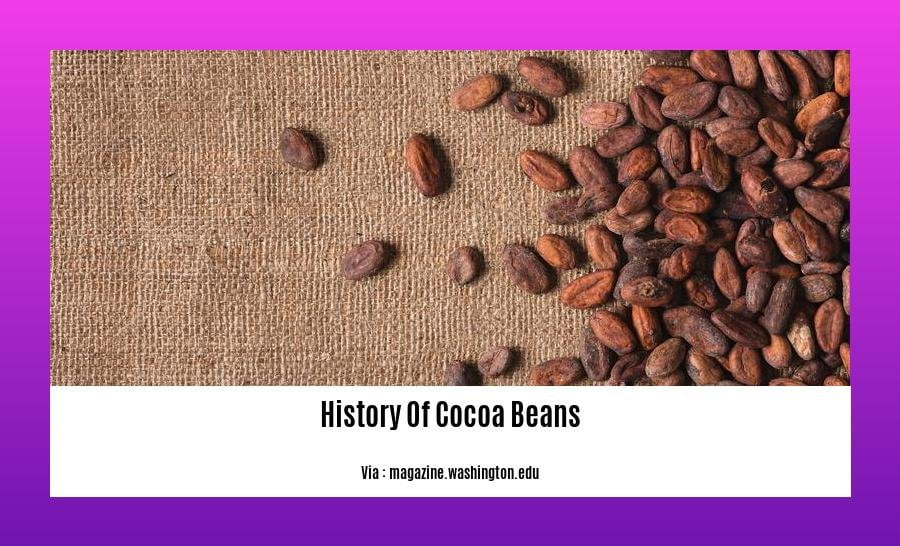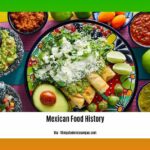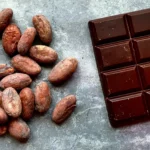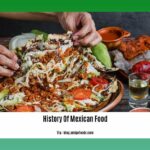Prepare to delve into the enticing journey of cocoa beans in [The History of Cocoa Beans: From Ancient Origins to Modern Delights]. From their humble beginnings in the rainforests of South America to their triumphant rise as a global culinary sensation, this article unveils the rich history behind this treasured ingredient. Join us as we explore cocoa beans’ profound cultural significance, tracing their transformation from a sacred Mayan beverage to a versatile staple in modern cuisine.
Key Takeaways:
- Cocoa beans originated in the Amazon rainforest and were domesticated in South America around 5,300 years ago.
- The Olmecs introduced cocoa beans to Central America, where they became valuable commodities used as food and currency.
- Christopher Columbus brought cocoa beans to Spain in 1502.
- The Spanish conquistadors spread the cocoa bean throughout Europe after being introduced to a chocolate drink by the Aztecs in 1519.
- The first American chocolate house opened in Boston in 1682.
History of Cocoa Beans
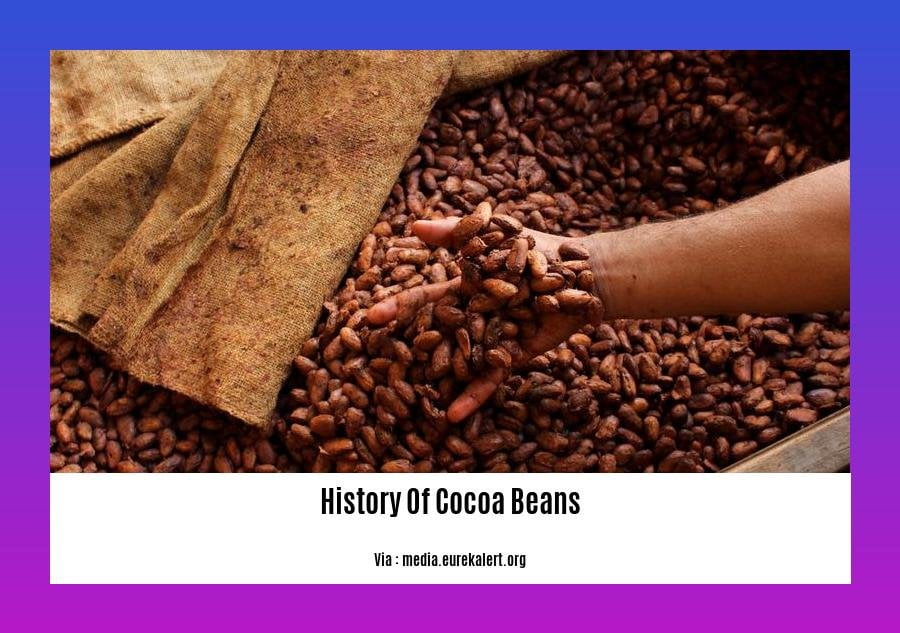
In the heart of the Amazon rainforest, a culinary treasure was born 5,300 years ago: the cocoa bean. Domesticated in South America, these precious seeds embarked on a journey that would transform the world’s palate forever.
The Olmecs, an ancient Mesoamerican civilization, played a pivotal role in the cocoa bean’s odyssey. They introduced the beans to Central America, where they flourished as both a food source and a symbol of wealth.
In 1502, Christopher Columbus, a European explorer, brought cocoa beans to Spain, igniting a passion for this exotic ingredient that would soon sweep across the continent.
The Spanish conquistadors, upon encountering the Aztecs in 1519, were introduced to a delightful beverage crafted from cocoa beans. This chocolate drink, a symbol of Aztec culture, captivated the Spanish, who eagerly disseminated the cocoa bean throughout Europe.
In 1682, Boston witnessed the establishment of the first American chocolate house, a testament to the cocoa bean’s growing popularity. This humble establishment paved the way for a flourishing chocolate industry in the United States.
Throughout the centuries, the history of cocoa beans is intertwined with exploration, trade, and cultural exchange. From its humble origins in the Amazon rainforest to its global culinary dominance, the cocoa bean has left an indelible mark on our culinary heritage.
For chocoholics who are curious about the origins of their favorite sweet treat, delve into the fascinating history of cocoa and discover how it transformed from an ancient Mayan beverage to the global confection we know today.
Who would have guessed that the humble cookie has such a rich and diverse past? Embark on a culinary journey through the history of cookies and uncover the captivating stories behind your favorite sweet delights.
Prepare to be amazed as you journey through the history of dragon fruit, a tropical treasure with a captivating past. From ancient origins to modern-day cultivation, discover the secrets behind this exotic fruit’s rise to global popularity.
Cultural Significance: Tracing the Role of Cocoa Beans in Global Cuisine
From ceremonial drinks to a symbol of wealth and a delightful indulgence, the journey of cocoa beans through history is a tapestry of cultural influences and global exchange. This treasured ingredient, originating in the tropical regions near the equator, has played a pivotal role in shaping culinary traditions worldwide.
A Beverage of the Gods
In ancient Mesoamerica, the Maya and Aztec civilizations revered cocoa beans, considering them a gift from their gods. They cultivated the cacao tree with utmost care, using the beans to create a frothy, bitter drink that was believed to possess divine properties. This sacred beverage was reserved for special occasions and ceremonies, representing both nourishment and spiritual connection.
From Currency to Conquistadors
Beyond its spiritual significance, cocoa beans also served as a form of currency among the Mesoamerican peoples. They were highly valued for their rarity and versatility, used to purchase goods, pay taxes, and even settle disputes.
When the Spanish conquistadors arrived in the Americas, they were introduced to this intriguing beverage and its cultural significance. Recognizing its potential, they brought cocoa beans back to Spain, where they quickly gained popularity among the elite.
A Taste of the New World
Over time, cocoa beans became a symbol of exploration and cultural exchange. European explorers and traders played a crucial role in introducing cocoa to different parts of the world, leading to its widespread cultivation and the development of new chocolate-making techniques.
The introduction of cocoa beans to Europe sparked a passion for chocolate that spread like wildfire. Chocolate houses sprang up in major cities, becoming popular gathering places where people could indulge in this exotic delicacy.
A Culinary Revolution
The rise of chocolate in Europe had a profound impact on culinary traditions. It was incorporated into pastries, cakes, and other confections, infusing them with a rich, decadent flavor. Chocolate also became a popular ingredient in beverages, such as the hot chocolate that became a favorite among the European aristocracy.
Key Takeaways:
Cocoa beans originated in the tropical regions near the equator, with Africa being the largest producer today.
Mesoamerican civilizations, like the Maya and Aztecs, revered cocoa beans, using them in ceremonial drinks and as currency.
Spanish conquistadors introduced cocoa beans to Europe, where they gained popularity among the elite and became a symbol of exploration and cultural exchange.
The widespread cultivation of cocoa beans led to the development of new chocolate-making techniques and its incorporation into various culinary traditions worldwide.
Chocolate became a popular ingredient in pastries, cakes, beverages, and other confections, revolutionizing culinary traditions in Europe and beyond.
Sources
- Traceability, authenticity and sustainability of cocoa beans: a review
- The Cocoa Supply Chain: From Farmer to Consumer
Historical Impact: Examining the Influence of Cocoa Beans on Trade and Exploration
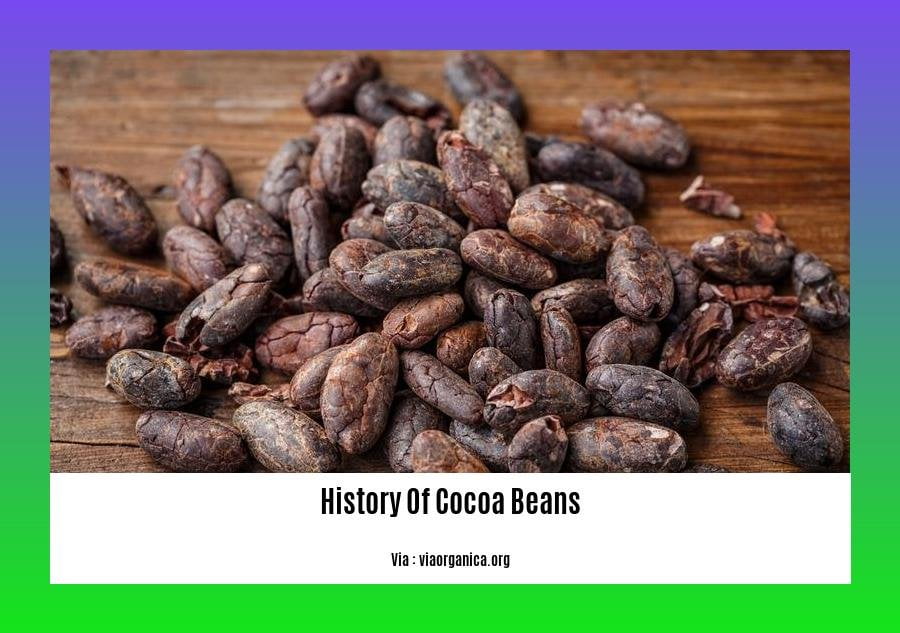
From ancient civilizations to modern culinary indulgences, cocoa beans have left an indelible mark on the course of history, shaping trade routes and driving explorations across the globe.
Cocoa Beans: A Historical Perspective
The journey of cocoa beans began in the tropical rainforests of the Americas, where the ancient Olmecs, Mayans, and Aztecs revered them as sacred offerings to their gods. These Mesoamerican civilizations cultivated and consumed cocoa beans as a precious commodity, using them as currency and a ceremonial beverage.
The Arrival of Cocoa Beans in Europe
In the 16th century, Christopher Columbus introduced cocoa beans to Europe, igniting a passion for chocolate that would soon sweep across the continent. The Spanish conquistadors, upon encountering the Aztecs, were captivated by their delectable chocolate drink, which they brought back to Spain, sparking a culinary revolution.
Cocoa Beans and the Transatlantic Slave Trade
The demand for cocoa beans in Europe led to the establishment of cocoa plantations in Africa, where the transatlantic slave trade played a dark and pivotal role. Enslaved Africans were forced to work on these plantations, enduring harsh conditions to meet the growing demand for this precious commodity.
Cocoa Beans and the Rise of Chocolate Empires
As the popularity of chocolate soared, entrepreneurial minds saw the potential to establish vast chocolate empires. In the 18th and 19th centuries, countries like Britain, France, and the Netherlands emerged as major players in the cocoa trade, establishing plantations and fueling the global chocolate industry.
Key Takeaways:
- Cocoa beans originated in the Americas, where ancient civilizations held them in high regard.
- The Spanish introduced cocoa beans to Europe, igniting a passion for chocolate that spread throughout the continent.
- The transatlantic slave trade played a tragic role in the expansion of cocoa plantations in Africa, exploiting enslaved individuals to meet the demand for cocoa beans.
- The rise of chocolate empires in Europe led to the establishment of plantations and the growth of the global chocolate industry.
Sources:
Traceability, authenticity and sustainability of cocoa beans: a review
The Cocoa Supply Chain: From Farmer to Consumer
Legacy and Future: Reflecting on the Enduring Importance of Cocoa Beans
Imagine stepping back in time, to a world without chocolate. It’s a reality our ancestors grappled with for millennia. The cocoa bean, with its rich legacy and promising future, has captivated taste buds and shaped civilizations for centuries. Let’s embark on a journey to unravel the enduring significance of this culinary treasure.
The Cocoa Bean’s Ancient Roots
The cocoa bean’s legacy is deeply intertwined with the history of our planet. Its journey began in the tropical rainforests of Mesoamerica, where the Olmecs, Mayans, and Aztecs revered it as a divine gift. They cultivated it, using its seeds not only for food but also for religious ceremonies and as a form of currency. These ancient civilizations were the first to unlock the bean’s potential, paving the way for its global journey.
Cocoa’s Arrival in Europe and Beyond
In the 16th century, Christopher Columbus brought cocoa beans to Europe, introducing them to the Spanish court. The Spanish were quick to appreciate the bean’s culinary allure, and soon, chocolate beverages spread throughout Europe like wildfire. The cocoa bean’s journey didn’t stop there. From Europe, it embarked on a global voyage, reaching the shores of Africa, Asia, and beyond. Plantations were established in tropical regions around the world, forever changing the agricultural landscape. Today, cocoa beans are produced in over 50 countries, with West Africa and Southeast Asia being major players.
The Bean’s Enduring Significance
As the demand for chocolate continues to rise, the cocoa bean’s impact is far-reaching. It is not just a culinary delight but also a source of income for millions of farmers and their families in developing countries. The cocoa industry plays a crucial role in supporting local economies and livelihoods. Moreover, the bean’s versatility extends beyond chocolate production. Cocoa butter, a by-product of cocoa processing, is used in cosmetics, pharmaceuticals, and even in the production of soap and candles.
Innovations and Sustainability
The cocoa industry is not without its challenges. Concerns about sustainability, child labor, and climate change are at the forefront of discussions. However, there is a growing movement towards sustainable cocoa farming practices, with initiatives to improve traceability, ensure fair trade, and promote farmer well-being. Innovations in breeding, pest control, and fermentation techniques are also being explored to increase productivity and improve bean quality.
The Future of Cocoa
As we look to the future, the cocoa industry stands at a crossroads. Will we continue to exploit the land and its people for short-term gains, or can we find a way to make cocoa production sustainable and equitable? The answer lies in collaboration, innovation, and a shared commitment to preserving the legacy and enduring importance of cocoa beans.
Key Takeaways:
Cocoa beans have a rich history, originating in Mesoamerica and revered by ancient civilizations.
The introduction of cocoa beans to Europe sparked a global chocolate craze, forever changing the culinary landscape.
The cocoa industry plays a significant role in supporting local economies in developing countries, providing income for millions of farmers.
Cocoa beans are not only used for chocolate production but also in cosmetics, pharmaceuticals, and various other industries.
Sustainability, traceability, and fair trade are key challenges facing the cocoa industry, requiring innovative solutions to ensure a brighter future.
The future of cocoa lies in collaboration, innovation, and a commitment to preserving the legacy and enduring importance of cocoa beans.
Sources:
[1] Traceability, Authenticity and Sustainability of Cocoa Beans: A Review
[]
[2] Sustainability and the Chocolate Industry
[
FAQ
Q1: When and where did the cultivation of cocoa beans originate?
A1: Cocoa beans originated in the Amazon rainforest and were first domesticated in South America around 5,300 years ago.
Q2: How were cocoa beans introduced to Europe?
A2: Christopher Columbus brought cocoa beans to Spain in 1502 after encountering them during his explorations in the Americas.
Q3: What role did the Aztec civilization play in the spread of cocoa beans?
A3: The Aztecs cultivated cocoa beans and used them to make a ceremonial drink called “xocoatl.” They also used cocoa beans as currency and believed them to be a gift from their gods.
Q4: How did cocoa beans become a popular commodity in the global trade?
A4: The Spanish conquistadors, who were introduced to cocoa beans by the Aztecs, played a significant role in spreading cocoa throughout Europe. The demand for cocoa beans grew as European explorers and traders established contact with cocoa-producing regions in the Americas, leading to their widespread cultivation and trade.
Q5: What are the major cocoa-producing regions in the world today?
A5: Africa is the largest cocoa-producing region, responsible for approximately 75% of the world’s cocoa production. The Ivory Coast, Ghana, and Indonesia are the top three cocoa-producing countries, collectively accounting for over half of the global cocoa output.
